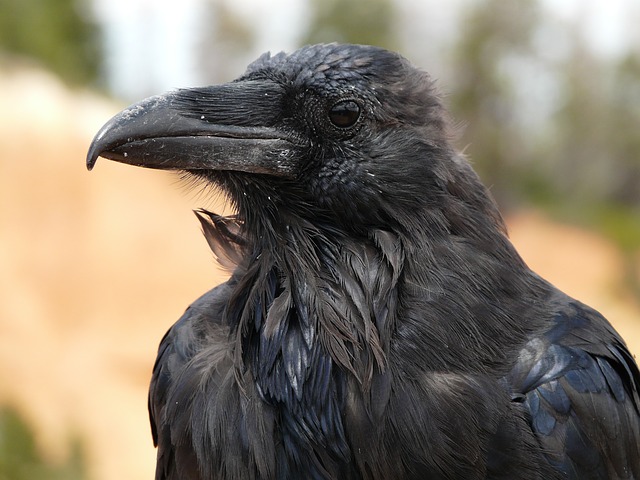
Perhaps it’s because of Edgar Allen Poe’s “The Raven” or the constant caw coming from the tree in my childhood yard during fall, but crows and ravens remind me of October. I know that’s silly (since crows and ravens can pretty much be found throughout the United States at any time of year), but it’s the connotation that sticks with me the most.
As a cool breeze once again sweeps through the city to remove the dying leaves from the trees, I’ve begun to see more large black birds flying about.
Despite my draw toward crows and ravens during this time of year, I could never figure out how to tell apart the two types of birds. Fortunately, it’s surprisingly easy to tell them apart once you remember a few things. Let’s learn a little about the birds first.
About Crows

For all intents and purposes, we’re only talking about American Crows in this comparison — simply because they’re the most common. The similar-looking Fish Crow is found mainly in the southeastern portion of the United States, so you will encounter the American Crow if you live elsewhere.
Crows are all black and can sometimes seem more brownish when molting. Extremely intelligent, crows are often found around cities and in diverse habitats. They sometimes form huge flocks and scavenge for food wherever they can.
About Ravens

For ravens, we’re only talking about the Common Raven, although if you live in the southwestern and midwestern parts of the United States you may also encounter the Chihuahuan Raven. Common Ravens are found across western and northern North America.
Common Ravens are much less social than ravens — often alone or in pairs. Ravens are among the smartest birds in the world and live in more open and forest habitats.
Quick Side-by-side Comparison
Length: 20″
Wingspan: 42″
Found throughout US
Typically in groups
Fan-like tail
Smooth throat
Lighter caw-caw
Quicker flapping when flying
Length: 27″
Wingspan: 46″
Found mainly in western US
Typically alone or in pairs
Diamond-shaped tail
Shaggy throat when calling
Deeper kraaw
Graceful in flight
Ways to Tell the Difference
Size
Ravens are remarkably large compared to crows. A crow is about twice the size of a Blue Jay while a raven is nearly as large as a Red-tailed Hawk.
Tail
It’s not always easy to determine the size of a bird, especially when it’s flying, so the tail shape is another easy indicator of the species. Since a crow’s tail feathers are uniform in size, they form the shape of a fan. Ravens have longer feathers in the center of the tail that give it a diamond shape.
Voice
According to Cornell’s Lab of Ornithology, the voice is the best clue for identification between the two. A crow makes a higher pitched caw caw sound while the raven has a much deeper croak. You can find some good audio of the two here.

Flying
Another way to tell the difference is the way it flies. A crow has a more frenetic flapping motion when flying while ravens have the ability to soar more gracefully.
Behavior
As stated earlier, crows are much more social and outgoing with other crows than ravens. You’ll frequently find them as part of larger flocks. On the other hand, ravens like to be alone or in pairs. However, sometimes you will see ravens grouped together in a large feeding area like a dump.


